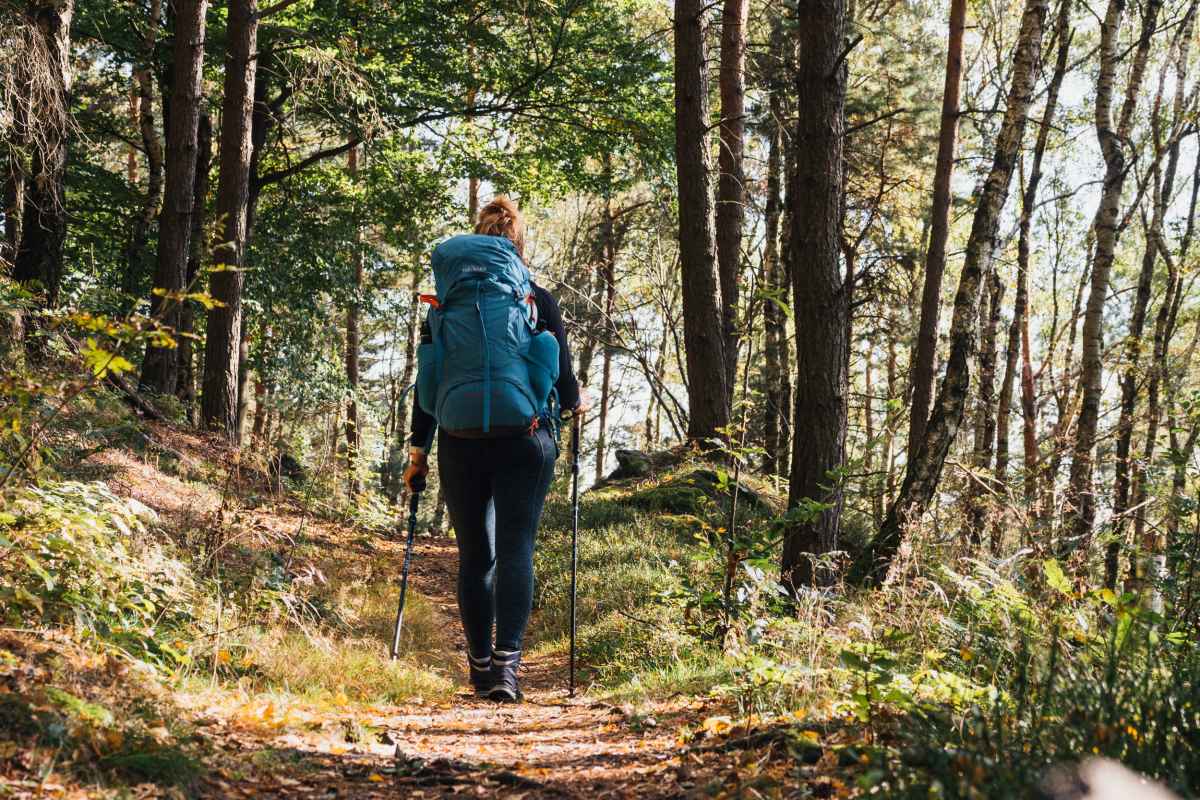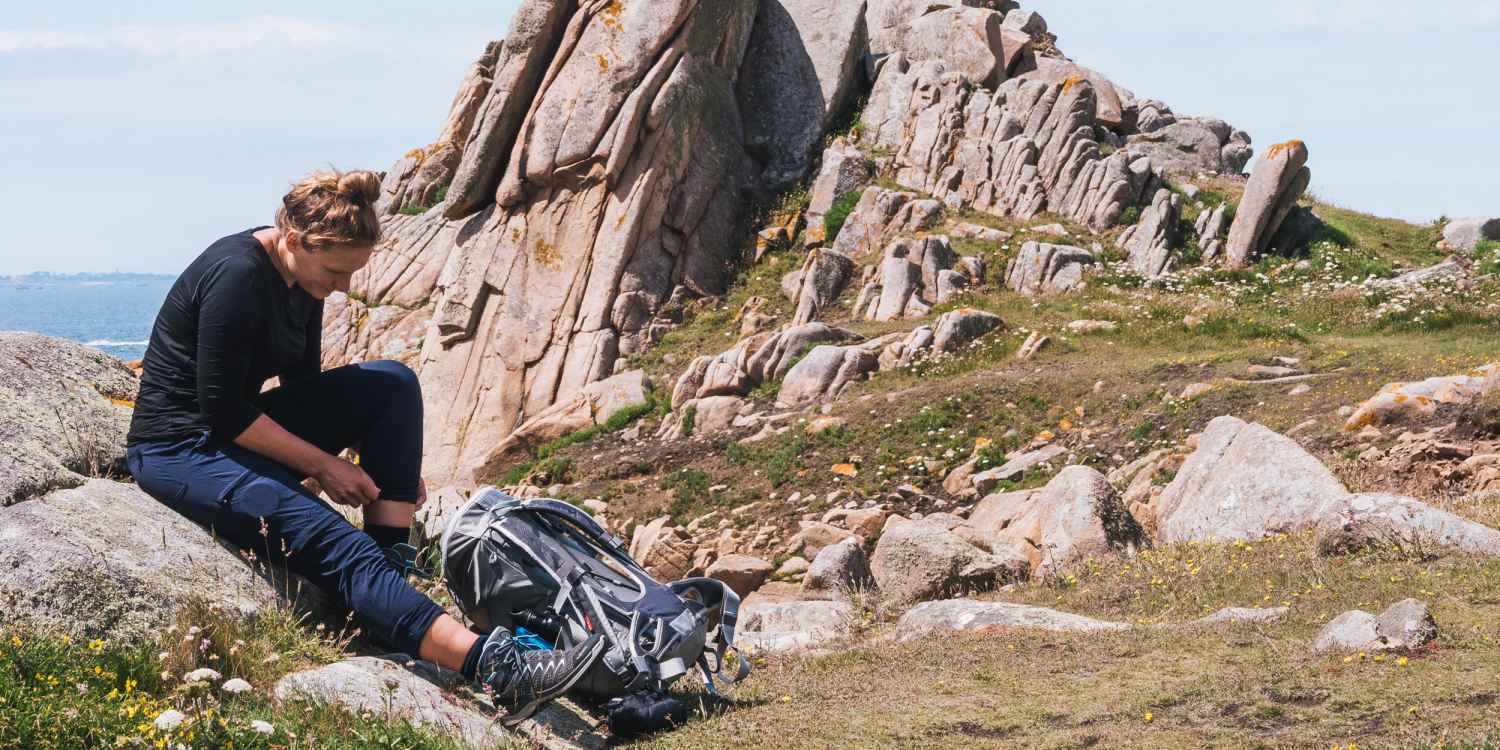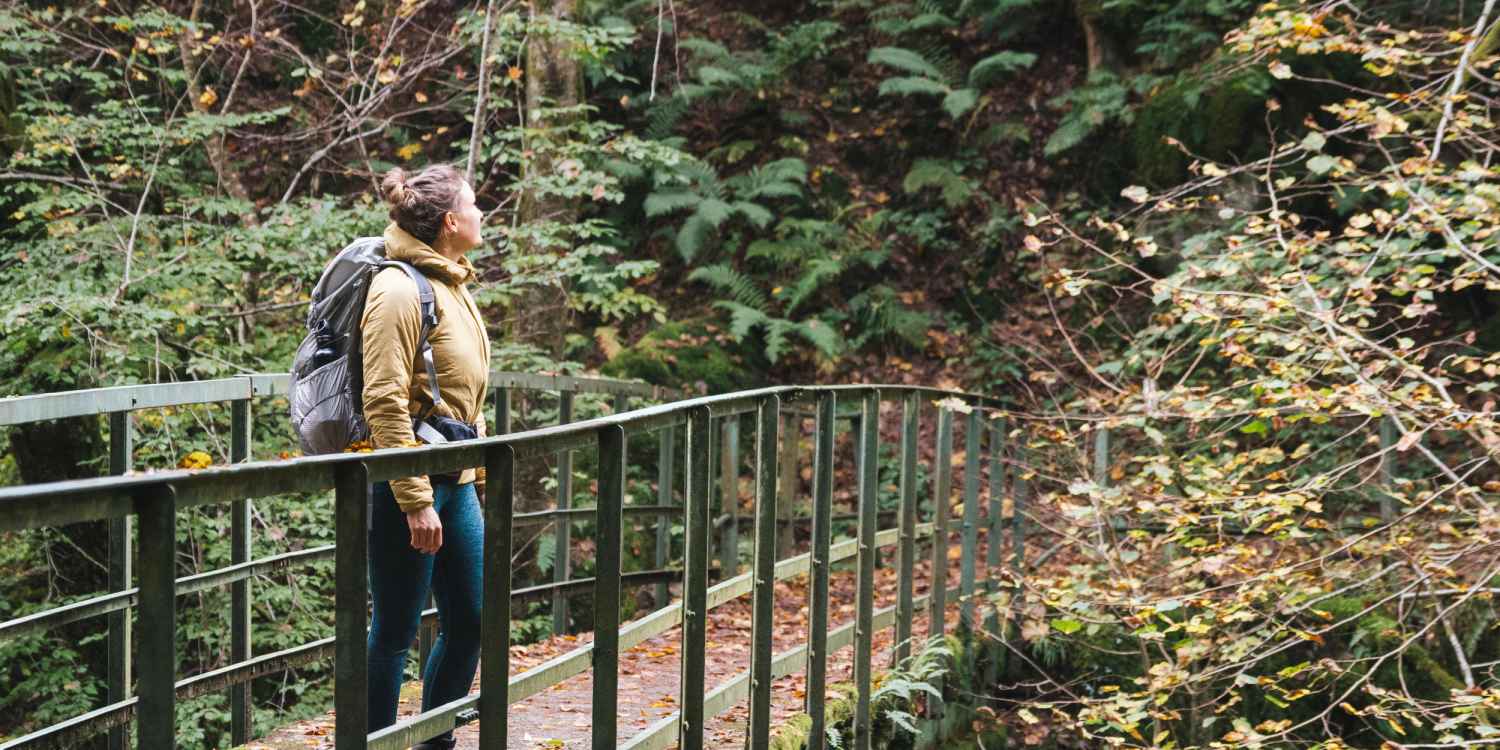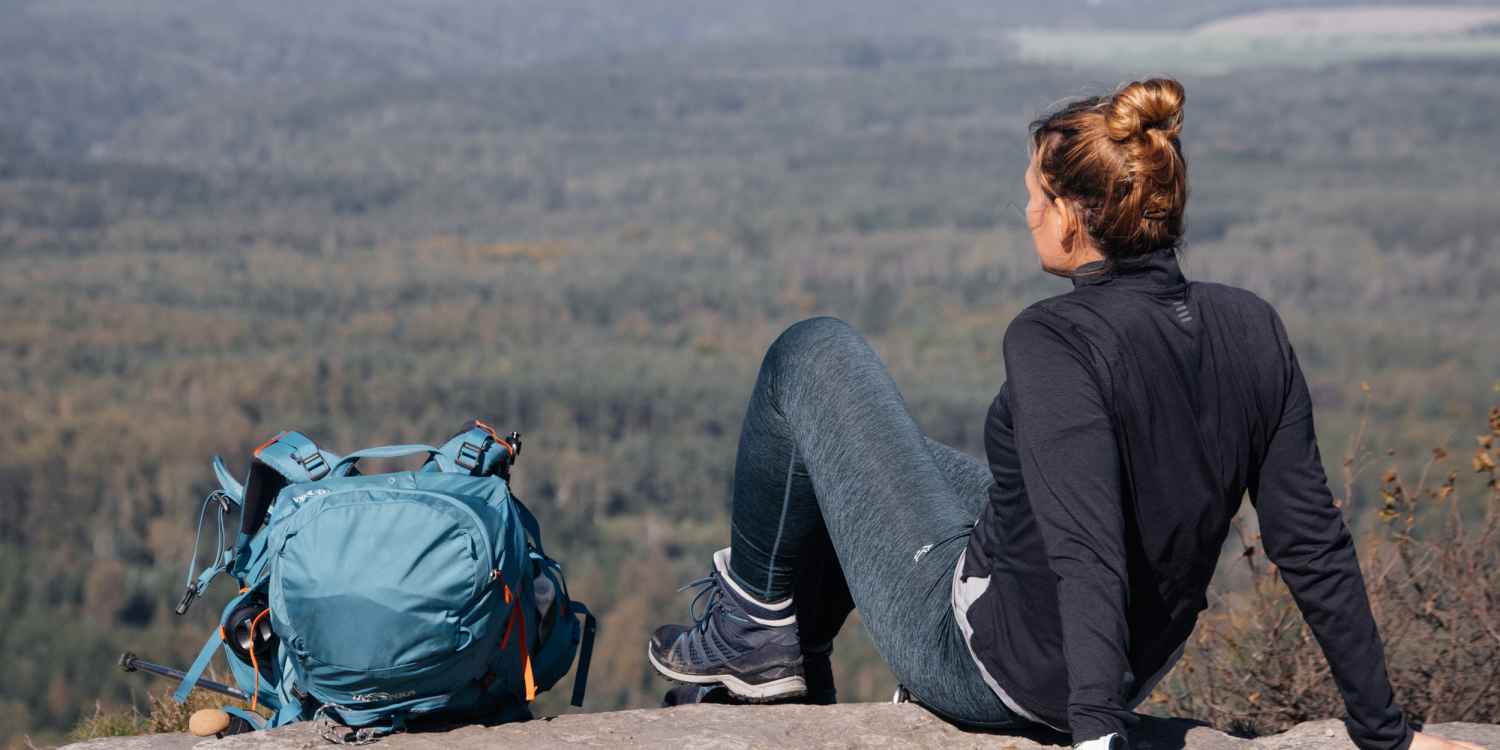One of the best ways of making long-distance hiking as easy as possible is to minimise the unaccustomed strain of your first expedition by packing only what you need, so that your backpack is as light as you can make it. To keep track of everything, a packing list of all the items that should go into your backpack is very helpful. Ideally, you should also note the weight of the individual items of equipment on your list, so that you can quickly see where there is still room for reducing the load further. Of course, you don’t have to go ultralight and cut the handle off your toothbrush. But it really is worthwhile to keep an eye on what your hiking equipment weighs right from the beginning and practise a bit of minimalism.
First long-distance trek: tips for beginners First long-distance trek: tips for beginners

Lacing up your hiking boots in the knowledge that you don’t have to do anything for the next few days, or even weeks, other than put one foot in front of the other is a truly special feeling. However, planning your first long-distance trek can also be challenging and tricky. The following tips should help you prepare and make the beginning of life as a long-distance hiker easier.

A small amount of luggage makes your tour easier Pack as little as possible

The right footwear for your backpacking trek Choose the right hiking boots
Hiking boots are one of the pieces of equipment that can make or break a long-distance trek. Countless expeditions have failed simply due to blisters or foot pain! And that hurts in more ways than one. On the one hand, it is important when choosing boots that they are a very good fit for your foot and, if they are leather shoes, that they have been sufficiently broken in before you set out on your big hike. But it is just as important to choose a type of boot that suits the trail you have planned. Crampon-fitted mountaineering boots on well-maintained trails in low mountain ranges quickly spoil the fun of hiking. On the other hand, light hiking boots are not necessarily the best choice for demanding alpine terrain.

Only those who set out can arrive Take the first step
Every long-distance trek begins with the first step. This applies not only to the hike itself, but also to the preparations. Especially if you don’t yet have a lot of equipment or hiking experience, the list of things to organise and consider can appear quite intimidating at first. On top of that, you may be uncertain about whether you are up to the whole thing or not. Taking the first step to make the dream of a long-distance trek come true is often the hardest part. However, the first step can be something you can do right away and without much preparation. Once the ball has started rolling, the rest becomes a lot easier. Promise!

Well-prepared planning will make your tour easier Plan your route properly
If you have “only” been on day hikes so far, and have no experience with walking for several days in a row, it is advisable to err on the side of easy when planning the distance of your hiking stages. In other words: aim at a few less meters of vertical gain and kilometres of horizontal distance than you are used to on your single-day hikes. Hiking for several days at a stretch is a particular challenge, not least because your backpack is also heavier than usual. For this reason, it is advisable not to begin with an extended wilderness trek, but rather to follow a well-signposted established hiking trail. Germany and its neighbouring European countries have countless such paths: trails certified by the European Ramblers Associations (http://www.era-ewv-ferp.com) are particularly suitable, for example. You can be sure that these paths are hiker-friendly, the signposting is consistent and there are places to stop for refreshments and overnight accommodation. In this way, you can approach long-distance hiking slowly but surely, and not run the risk of encountering too many problems all at once.

Prepare yourself mentally and physically Make sure you are in the right condition
A few longer day hikes in advance to prepare for your first long-distance hike are irreplaceable. They let you test your equipment and get a feeling for the length of the stages you can tackle. And, of course, they also allow you to train your fitness “as a side effect”. Specific training for your feet is also very useful: even though hill-walking is ultimately a workout for the entire body, your feet are particularly exposed to strain. Just a few minutes of foot exercises each day, for example doing calf raises or balancing exercises on an unstable surface, can make a big difference over time. However, not only strong feet, but also a strong mind is crucial for a successful long-distance hike. To strengthen your mental fitness, you can deliberately go on a day hike in bad weather, for example. That way you learn to deal with low points.

Always stay calm, cool and collected Don’t let yourself be perturbed
At some point between planning the route and researching into equipment, it can be easy to lose your nerves. In this case, it helps to take a deep breath, and remember that not everything has to work out absolutely perfectly at the first go. Of course, even in our latitudes, trekking should not be taken lightly, but many potential problems can still be resolved along the way. And, at the latest, the next time you go on a hike, you’ll know that much more. It is important to stay as calm as possible – both during preparations as on the road. If in doubt, it helps to take a break and a few deep breaths. Afterwards, everything usually looks a whole lot better again.
